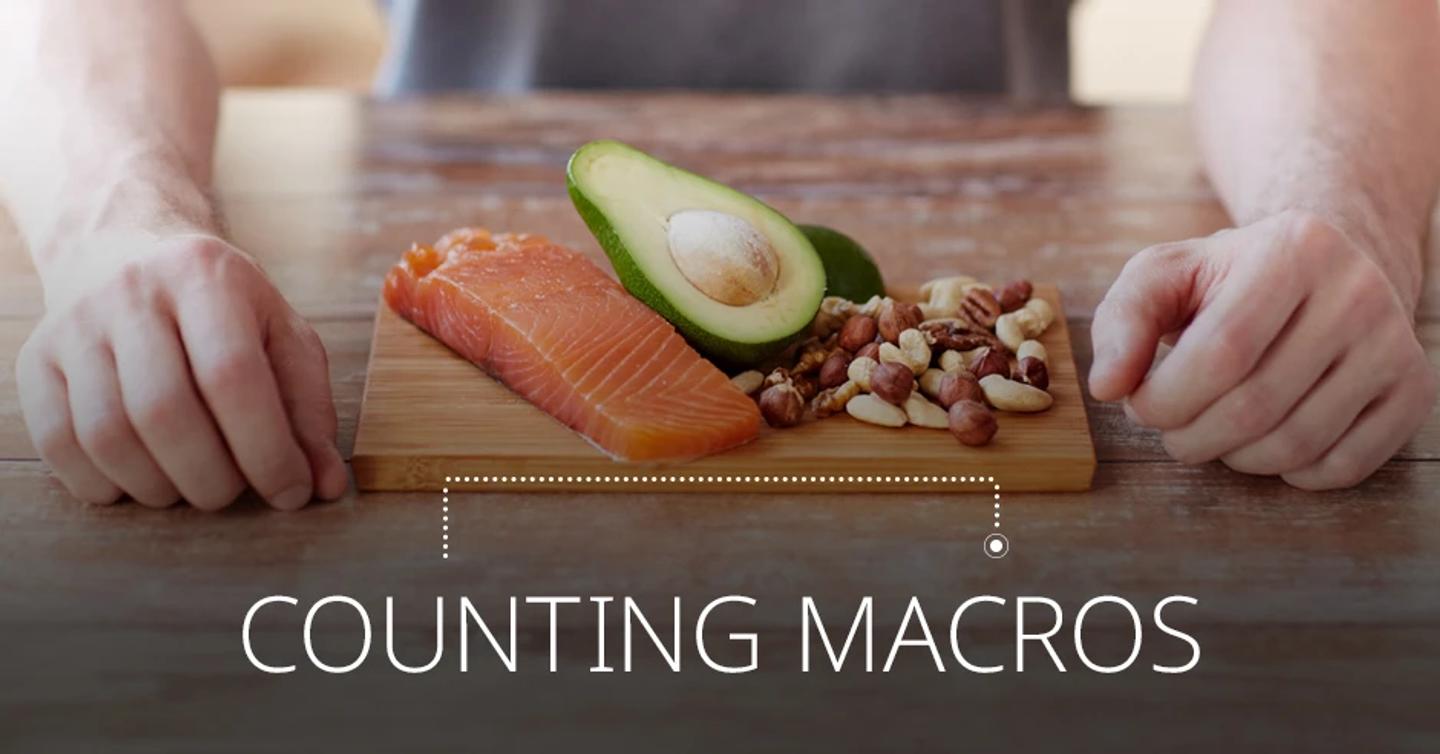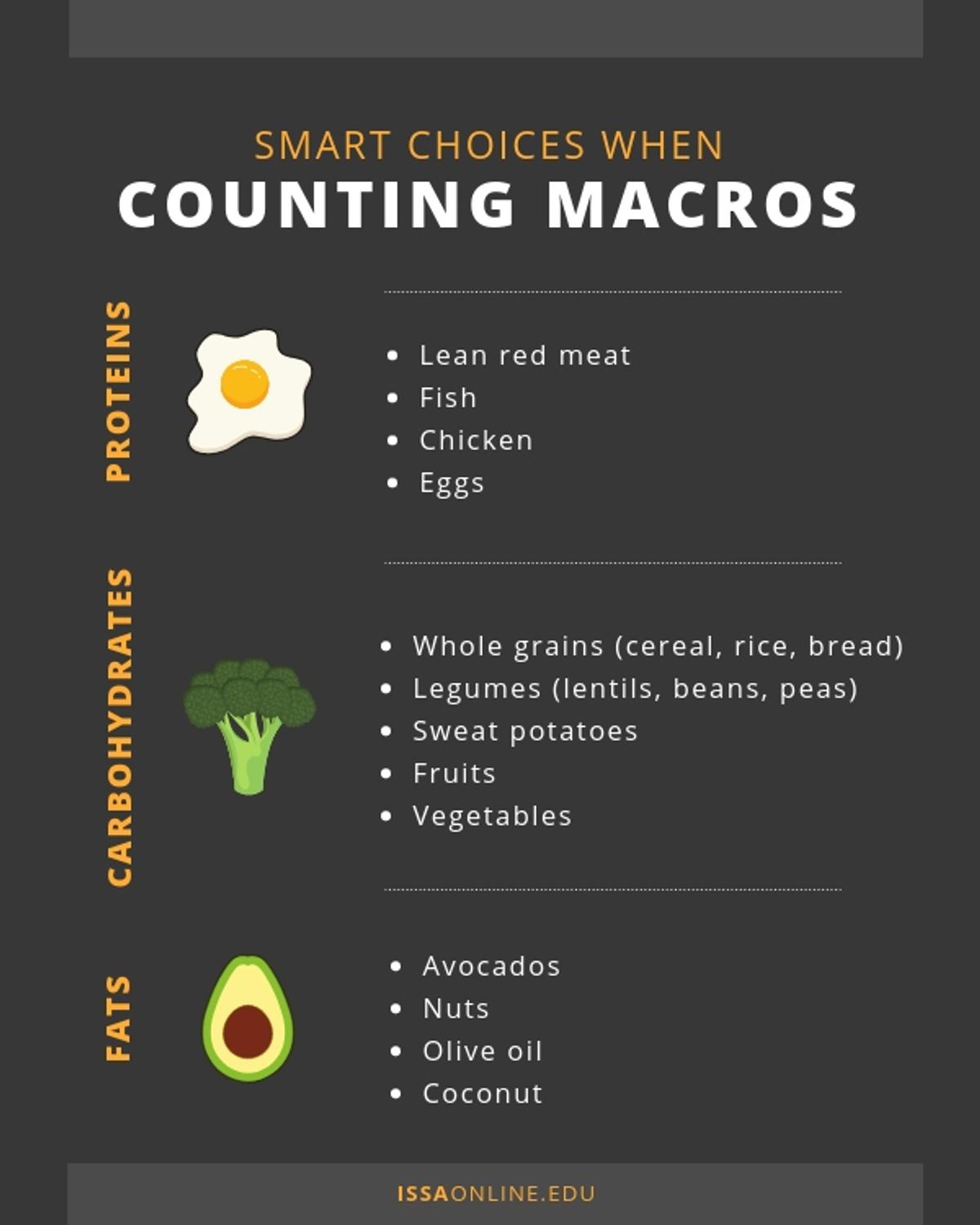
Counting Macros: A Reliable Way To Lose Weight?
Reading Time: 6 minutes 6 seconds
BY: ISSA
DATE: 2018-12-19
When it comes to cardinal rules in the world of fitness professionals, this one sits near the top: No personal trainer should ever recommend or endorse a particular diet for weight loss.
There are simply too many variables involved, with every client's story unique. But that hasn't stopped the next diet "fad" from always being right around the corner, complete with an alleged scientific breakthrough that promises results that all too often fail to deliver for the countless number of people who invest their time and money.
Which is why so many turn back to the old reliable: Burn more calories in a day than you take in and you'll lose weight, an approach that usually coincides with a lifestyle change. From that basic concept was born, long ago, the idea of counting calories, followed relatively recently by its lesser known relative, counting macros.
Clients might start asking you if they should be counting their macros and how it works. Whether you agree with this type of food tracking and diet is up to you. However, what's important is that you know the details behind counting macros and that you refer them out if their questions encroach on your scope of work.
What Are Macros?
Macronutrients (macros) are the body's primary source for energy, with vitamins, minerals, and phytonutrients—micronutrients—offering a supporting role. Macronutrients consist of the proteins, carbohydrates, and fats contained in the food we consume. With the exception of alcohol, macros account for all the calories we get from what we eat and drink. Each of the macros plays a distinct role in developing and maintaining fitness and health.
Proteins help build and maintain lean muscle mass. Proteins also build, maintain, and repair body tissue, which is especially important to the recovery process after a workout.
Carbohydrates are the primary energy source for the body and the brain. Carbs increase blood glucose levels, which is what supplies the energy to the body and is the preferred source of energy to the brain.
Fats help regulate hormones. And while all types of fats should be part of a healthy diet, unsaturated fats should be the predominant kind, with saturated and trans fats held to a minimum.
Each macro has a certain number of calories per gram. A gram of protein or carbohydrate equals four calories. A gram of fat equals nine calories. If drinking alcohol is part of the equation, that needs to be accounted for, too. Alcohol has seven calories per gram.
The percentage of macros in a diet has a direct effect on the body's ability to perform and recover from exercise, control hunger, and gain or lose weight. When compared to counting only calories, it's a difference that proponents say can be explained like this: Counting calories is like buying a suit off the rack; counting macros is like having a suit tailor-made.
Counting Macros and Weight Loss
A diet that allows people to eat whatever they want and still lose weight? It's a concept that should be on every trainer's radar.
Those who rave about the diet are most often drawn to counting macros for weight loss because all foods—including jumbo chocolate chip cookies, loaded baked potatoes, and fried chicken—are allowed, as long as they "fit your macros." This is in stark contrast to most other diets which restrict the types of foods you're allowed to consume.
If you have clients who find counting calories to be tedious, they won't be excited to hear that they now need to weigh and measure their foods. Counting calories is hard enough for most, without adding to the equation the breakdown of protein, carbohydrates ("do I count carbs before or after fiber?") and fats in each item. But those who have given it the ol' college try say that the counting and weighing aren't so bad, especially if the results are there.
By counting—or tracking—macros, clients can more closely regulate what they are eating and drinking than by simply counting calories, as counting calories doesn't take into account the quality of the food, just the quantity.
Counting macros has been popular among bodybuilders for years, allowing them to customize their diets at specific points in their training program to support performance and manage body composition.
Making Sense of the Numbers
Generally speaking, an individual should consume more carbohydrates to achieve lean mass gains and fewer carbs to achieve fat loss. The types of carbs consumed matters too, with complex carbs, which provide a steady release of energy, preferred over simple carbs. For a more in-depth look at carbs, check out our Tips to Help Clients Understand Carbs.
The macro profile for each client is dependent upon their goals. Here's a cheat sheet to get you started:
To build muscle: 30-40% carbs, 25-35% protein, 15-25% fats
For fat loss: 10-30% carbs, 40-50% protein, 30-40% fats
To maintain: 30-50% carbs, 25-35% protein, 25-35% fats
As you can see, there is a lot of wiggle room (up to 20%) when you calculate macros for your client and you can adjust the ratio as needed if they aren't seeing results.
You should also take into account your client's body type.
Ectomorphs (thin, small bones) can handle a higher percentage of carbs (around 55 percent), with moderate protein (25) and low fats (20).
Mesomorphs (athletic) call for a more balanced percentage (40 for carbs, 30 each for protein and fats).
Endomorphs (larger bones, higher fat mass) are better suited for fewer carbs (25), a moderate amount of protein (25) and lower fats (20).
How to Plan Your Diet and Reach Your Goals
The best place to start is to determine how many calories your client needs on a daily basis to maintain a healthy lifestyle. IIFYM.com, myfitnesspal.com and loseit.com are popular websites that offer macros calculators, making it simple to determine the right percentages for each fitness goal. Encourage your clients to download a phone app for one of these sites to make tracking even easier.
As an example, we will focus on the fictional Jane, a 35-year-old woman, 5-foot-7, 155 pounds, who is moderately active. Her goal is to cut fat and lose weight.
Using an online calorie calculator, we determined that she would need to limit her diet to approximately 1400 net calories a day to lose one pound a week. As a general rule, the daily allotment of protein for weight loss should calculate to one gram of protein per pound of bodyweight. So, Jane should consume 155 grams of protein per day, which means that 620 of her 1400 kcals (44 percent) should come from proteins. That leaves 780 calories to be divided between carbs and fats.
With fat loss as the goal, we will limit her carb intake to approximately 20 percent of the remaining calories. Approximately 280 calories, or 70 grams, will be committed to carbs. That leaves 36 percent of her calories to come from fats, about 51 grams of fat and 200 calories.
Jane now knows that if her daily diet includes 155 grams of protein, 70 grams of carbs, and 51 grams of fat, and that if she maintains her current level of activity, she will be able to lose one pound per week.
To make sure she stays on track, Jane will have to use a food scale to measure various portions. While much of the food we eat has nutritional information on the package that easily can be read to determine the macros in a single serving, foods such as pasta and rice need to be weighed.
If a client is new to dieting, it is important that they use a food log to get started. Review our recent article, Food Logging: The What, Why, and How to Get Client Results, to catch up on the benefits of tracking food and more importantly, eating habits. You can ease your client into a better-balanced macronutrient profile by adjusting their macros each week and tracking it in a food log.
Another key component to staying true to this particular diet is to plan meals in advance. Trying to put a meal together at the last minute raises the possibility of the numbers failing to add up correctly. Keeping a food log, at least in the early stages of counting macros, also will help in making smart choices.
Over time it becomes easier to recognize proper portion sizes, which, by the way, fall right in line with the age-old method of using your hand, your fist, and your thumb to measure proteins, carbs and fats.
Sometimes what's old is what's new.
If you're ready to learn more about nutrition and want to take your clients to the next level, check out the ISSA's Certified Nutrition Specialist course. Give yourself the knowledge to help client plan meals and build better eating habits to meet their goals.

Click HERE to download this handout and share with your clients!